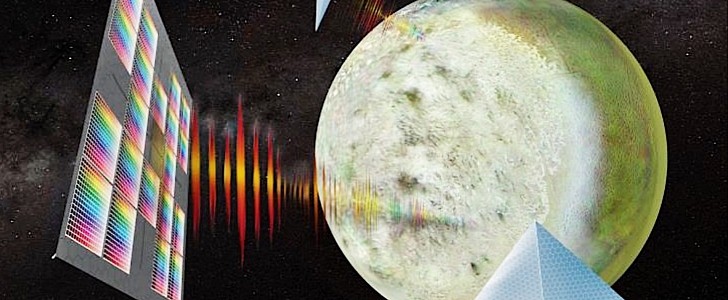I know, the above title may seem a bit counter-intuitive, but the reality remains that even in places so far away that the Sun’s rays barely reach, their power could help humanity with its exploration efforts.
To date, there have been countless space missions, targeting a variety of celestial bodies and goals. Just three programs though in the decades-long history of space exploration, have been targeted at the outer solar system: Voyager, Pioneer, and New Horizons.
The reasons for that are quite simple: the outer solar system is very far away, it takes a lot of time to reach it, and you are never guaranteed the hardware will survive the trip (believe it or not, all three programs we mentioned earlier were successes).
NASA, the forward-looking space agency that it is, is always looking for new ideas of how to make space exploration easier. One way it does this is through something called Innovative Advanced Concepts (NIAC), awarding grants to people and organizations who come up with interesting ideas for space exploration.
One of this year’s grant recipients is Mahmooda Sultana from NASA’s own Goddard Space Flight Center. The scientist imagined something called SCOPE, or ScienceCraft for Outer Planet Exploration.
SCOPE relies on solar sails, but not ones as we know them, but featuring a printed quantum dot-based spectrometer that should allow for rapid travel across the solar system.
The scientist does not explain exactly how that’ll work, but we are told how fast spacecraft, which usually take about decades to reach the outer solar system, can do it while using this: something powered by such a solar sail could reach Uranus in less than 2 years and Neptune in less than 3 years.
Now, don’t get your hopes of seeing that happening any time soon, as the idea is still in a Phase I grant stage, but if the initial development plan works, who knows what the near future will bring.
The reasons for that are quite simple: the outer solar system is very far away, it takes a lot of time to reach it, and you are never guaranteed the hardware will survive the trip (believe it or not, all three programs we mentioned earlier were successes).
NASA, the forward-looking space agency that it is, is always looking for new ideas of how to make space exploration easier. One way it does this is through something called Innovative Advanced Concepts (NIAC), awarding grants to people and organizations who come up with interesting ideas for space exploration.
One of this year’s grant recipients is Mahmooda Sultana from NASA’s own Goddard Space Flight Center. The scientist imagined something called SCOPE, or ScienceCraft for Outer Planet Exploration.
SCOPE relies on solar sails, but not ones as we know them, but featuring a printed quantum dot-based spectrometer that should allow for rapid travel across the solar system.
The scientist does not explain exactly how that’ll work, but we are told how fast spacecraft, which usually take about decades to reach the outer solar system, can do it while using this: something powered by such a solar sail could reach Uranus in less than 2 years and Neptune in less than 3 years.
Now, don’t get your hopes of seeing that happening any time soon, as the idea is still in a Phase I grant stage, but if the initial development plan works, who knows what the near future will bring.






